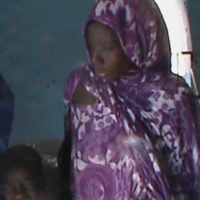
Fatimata
Mauritania is one of the last countries in the world where people are still born into hereditary slavery, which means they are literally owned by other people, and forced to work for masters their entire lives. People in slavery come from the Haratine ethnic group, historically enslaved by White Moors. They can be bought and sold, or given as gifts, and face a lifetime of exploitation and abuse. Rape of female slaves is common and their children also become slaves. They are Muslims, and many believe that it is Allah’s wish for them to be enslaved because they are told that their paradise is bound to their Master. In reality, Islam dictates that a Muslim cannot enslave a fellow Muslim. Since 2007 slavery has been criminalised in Mauritania but the law is not enforced and the government is reluctant to acknowledge the existence of the problem. With support from Anti-Slavery International, Fatimata’s master was convicted for slavery in a landmark case in May 2016.
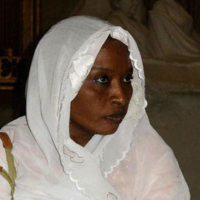
Salma (Narrative 2)
Salma was born into slavery in Mauritania, one of the last places on earth where hereditary chattel slavery is practiced. She smuggled herself across the Atlantic on a cargo ship to freedom, arriving in the US in 1999. The following year, she sought legal asylum through the New York Association for New Americans. An immigration judge ruled that Salma was a slave entitled to US protection.Salma first told her story in 2003, and updated it here in 2009.
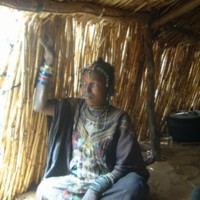
Tamada
Tamada was born into slavery in Niger, home to some 43,000 hereditary slaves. Found among four of the country’s eight ethnic groups, slavery is a centuries-old practice in Niger. Slaves are controlled through violence and indoctrination, and are separated from their parents at a young age. Women and girls perform domestic duties, men tend herds of cattle and goats, and children are often passed from one owner to another. Individuals are also born into slavery in Mauritania, Mali, and Chad. Slavery was outlawed in Niger in 1960, when the country claimed independence from France, but this remained a theoretical ban. In May 2003 slavery was made punishable by up to 30 years in prison, and that same year, Tamada learnt that her mother and grandmother had escaped from their master. She decided to do the same. But her turning-point took several months: she waited, worried, and thought about running away, before seizing her children one evening and beginning her escape. Leaving Mali, she crossed the border back into Niger with her two children—the first born when Tamada was 12 years old. She was assisted by Timidria, a human rights organization founded in 1991. Tamada concludes with an acknowledgement that life after bondage remains hard. And the 2003 law seems to have made little difference for other slaves. In September 2004, the Tuareg chief Arissal Ag Amdague made a written promise that he would release 7000 slaves owned by his people. Claiming that his religious beliefs as a Muslim were incompatible with slaveholding, he said he wanted to release the slaves he had inherited. The date was set for this first ever release of slaves in Niger: March 5, 2005, at a ceremony in the village of Inates, near the border with Mali. But no mass emancipation took place. Instead, on March 5, just a month after Tamada had narrated her story, Amdague stood before the crowd and denied that he owned any slaves.
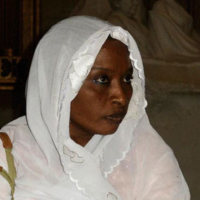
Salma (Narrative 1)
Like her mother and grandmother before her, Salma Mint Saloum was born into slavery in Mauritania. Slavery was first abolished in Mauritania in 1905, by colonial French rulers, and again when Mauritania joined the UN in October 1961. It was abolished for the third time in 1981 by the Military Committee of National Salvation. But the situation didn’t fundamentally change: masters don’t have to pay their slaves or provide any sort of social security; the ban did not address how masters were to be compensated or how slaves were to gain property; and there was no provision for enforcement. This arrangement allows the legal fiction of slavery’s abolition to continue. In 2003 Mauritania passed a law that made slaveholding punishable by fines and imprisonment but no slaveholder has been prosecuted. As Salma explains in her narrative, “[i]t doesn’t matter what the laws say there, because there they don’t apply the laws.” In 1997 Salma decided not to wait any longer, and liberated herself. She crossed the river border into Senegal, but still didn’t feel free. As she notes, “I was free. I still wasn’t free.” She felt that to be “truly free,” beyond the danger of re-enslavement, meant going to the US, and so began a journey that retraced the route of the transatlantic middle passage, though with a very different outcome. In the US, Salma observes, she experienced “total liberty.” Her narrative includes a long section that compares her life as a slave with her life as a free person, and Salma defines this new freedom. She focuses on freedom of expression, and being able “to talk with people I choose to talk to…to be free to go where I want, to eat what I want, to sleep where I want.” Freedom also means being able to “make decisions concerning my own children,” for in Mauritania she “never had the right” had to “watch the children of the master’s wife” instead of her own. Most importantly, however, freedom means being paid for her work. This, she emphasizes, is “really liberty.”Salma first told her story, as printed here, in 2003, and updated it in 2009.
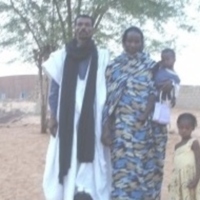
Selek’ha
Selek’ha Mint Ahmed Lebeid was born into slavery in Mauritania. She escaped in 2000 at the age of 20 after she reached a turning-point and realized she was a slave: “I felt my situation was wrong. I saw how others lived.” One day she started walking and didn’t stop until she was free. Then, with the human rights organization SOS Slaves, Selek’ha returned to seek the release of her mother, Oumoulkhér. Virtually all extended families of the dominant White Moor caste in Mauritania have owned slaves for generations: slaves are the property of a male family member and children of slave women become property too. Slave families usually live within their master’s household, are not paid for their work, and generally have no freedom of movement. They work as herders of livestock, agricultural workers, and domestic servants. As in the 19th-century American South, race matters intensely: most slaveholders are Arab Berbers and most slaves are descendents of black Africans. Estimates of the number of black Africans enslaved in Mauritania range from 100,000 to one million, a vast proportion of the country’s three million population.
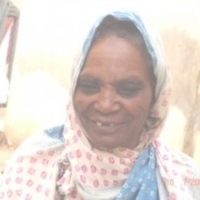
Oumoulkhér
Oumoulkhér Mint Mahmoud was born into slavery in Mauritania. Her daughter Selek’ha escaped and returned with the human rights organization SOS Slaves, to seek the release of Oumoulkhér. But Oumoulkhér initially refused to leave her master, and it was only when Selek’ha began to cry, in response to insults from the master’s wives, that she got “angry and…decided to leave.” Oumoulkhér’s narrative oscillates between assertions that freedom remains out of reach (“I am still a slave”) and acknowledgements that she is now free (“I was a good slave”). Oumoulkhér’s initial reluctance to accept her freedom because she is “an old lady” symbolizes the ancient and deeply-rooted form of slavery practiced in Mauritania: chattel slavery, more difficult to dislodge than the new slavery of the global economy. The practice of buying, selling, and breeding Africans hasn’t stopped in Mauritania since the 13th century, when Arab invaders entered the country to convert the Africans to Islam, abducted women and children, and bred a new caste of slaves. Slaves are raised to believe that serving their Arabo-Berber masters is a religious duty and most remain in bondage their whole lives.